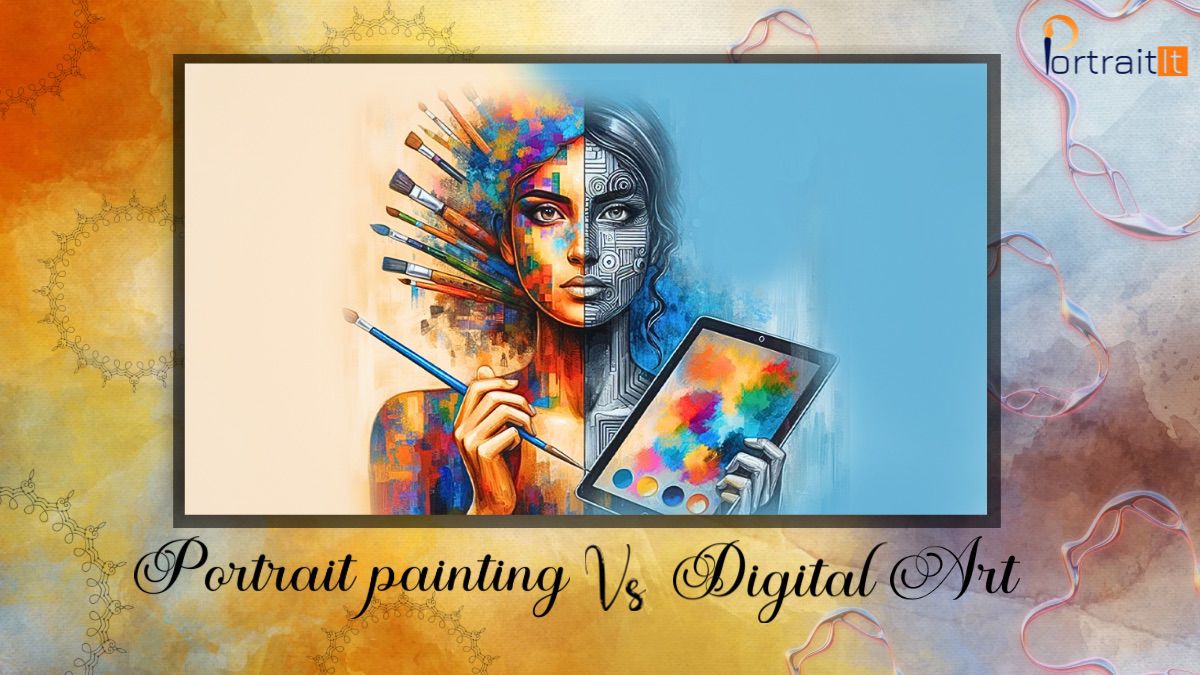The debate between traditional portrait painting Vs digital art is a topic that has been discussed for
quite some time. Both mediums have their advantages and disadvantages, and ultimately, it comes
down to personal preference.
In this blog, we will compare and read portrait painting Vs digital art and explore their pros and cons to help you decide which medium is better suited for your needs.
Portrait Painting
Portrait painting is a traditional art form that has been around for centuries. It
involves creating a physical painting using various mediums such as oil, watercolor, acrylic, or
charcoal.
The benefits of portrait painting include:
1. Uniqueness: Every painting is unique and original, making it a one-of-a-kind piece of art.
2. Texture: With traditional portrait painting, you can create texture and depth that is difficult to achieve
with digital art.
3. Skill: Portrait painting requires skill and technique, which can be rewarding for both the artist and the
viewer.
4. Physical Presence: A portrait painting is a tangible and physical piece of art that can be touched and
admired in person.
However, there are also some drawbacks to portrait painting, including:
1. Time-consuming: Portrait painting can take a long time to complete, which can be a challenge for
those who want to create a piece quickly.
2. Cost: The cost of materials and the time invested in creating a portrait painting can make it a more
expensive option.
3. Space: A portrait painting takes up physical space, which can be a problem for those with limited
storage space.
Digital Art
The Digital art involves creating artwork on a computer or other digital device using software
such as Photoshop, Illustrator, or Procreate.
The benefits of digital art include:
1. Efficiency: Digital art can be created quickly and efficiently, which is ideal for those who want to
produce art at a faster pace.
2. Cost-effective: Digital art is often more cost-effective than portrait painting since it does not require
expensive materials.
3. Editing: Digital art is easy to edit and modify, which can save time and make it easier to make
changes to a piece.
4. Accessibility: Digital art can be easily shared and distributed online, making it accessible to a wider
audience.
However, there are also some drawbacks to digital art, including:
1. Reproducibility: Since digital art is created on a computer, it can be easily reproduced, which can
diminish its value and uniqueness.
2. Flatness: Digital art can lack the texture and depth that traditional portrait painting provides.
3. Skill: While digital art does require skill, it does not require the same level of physical skill that
portrait painting requires.
In conclusion
The decision between portrait painting and digital art comes down to personal preference. Both mediums have their pros and cons, and ultimately, the choice should be based on the desired outcome and the individual artist & skill set. Whether the uniqueness of a portrait painting or the efficiency of digital art, both mediums can produce stunning pieces of art that are
worthy of admiration.


